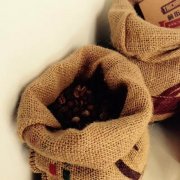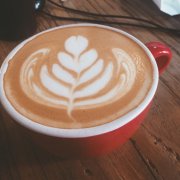Understanding the extraction rate is the basis of making a cup of espresso

What I want to tell you in the article is that the concept of extraction rate is not difficult, and there is little relationship between extraction rate and concentration, and extraction rate is very important, which you need to know as a barista.
Several questions will be mentioned in the article.
1 the concept of Golden Cup Criterion
2 the relationship between extraction rate and concentration
3 knowing the extraction rate, it is meaningful for us to adjust the grinding degree and powder quantity every day, and then we can make espresso better.
I wrote this article with reference to Han Huaizong's second volume and the group leader's diary. In the former, I was distracted after reading the book several times. I found the extraction rate very difficult, and then I really understood it after reading the group leader's diary. I simply call the group leader's three diaries as the pink trilogy. If you have time, you can take a look at http://www.douban.com/note/219055440/ http://www.douban.com/note/221059033/ http://www.douban.com/group/topic/31301576/.
Of course, before talking about the extraction rate, we should mention the gold cup criterion, what is the relationship between the extraction rate and the concentration. Solve the first and second problems I mentioned at the beginning. Of course, these two points are not very important, the most important is the third point.
First of all, let's talk about the Golden Cup rule. In theory, a good cup of coffee can be made as long as the extraction rate and concentration of the gold cup criterion are followed.
The scaa gold cup standard is that the extraction rate is between 18% and 22%, and the best concentration is between 1.15% and 1.35%. After the establishment of scaa in 1982, it has adopted this standard and is responsible for the promotion and certification of the Golden Cup Award.
Among them, the extraction rate is widely recognized and used in other countries, but the taste varies from country to country. Some countries have made changes to the concentration range, such as the concentration range of scae has been changed to 1.2%-1.45%, and the concentration range of Norway NCA has been changed to 1.3%-1.55%.
I know the concept of Golden Cup Criterion. Then follow the concept of concentration and extraction rate. The concentration is the value obtained by dividing the soluble substance by the milliliter of coffee liquid. The extraction rate is the soluble substance divided by the weight of coffee powder.
At the beginning of my article, I said that there is little relationship between the two. Both of them only have an effect on a cup of coffee at the same time, the extraction rate determines the quality of the taste spectrum, and the concentration determines the strength of the taste spectrum. If it really has anything to do with it. It is only that the concentration measured by tds can calculate the value of the soluble substance from the concentration formula, and then the extraction rate can be calculated.
What I said below is the focus of my article, but if I don't say it before, I think there is something missing.
Insert a little bit, no matter hand Philharmonic pressure or espresso extraction rate is in the golden range of 18%-22%, while espresso concentration will be higher, about 9%-11%.
So we have to solve the third problem, 3 know the extraction rate, we daily adjust the degree of grinding and powder content is meaningful.
The golden range of the extraction rate, as I have said above, is that the extraction rate is between 18% and 22%, when the coffee is the most pleasant.
Then the value that is not in the interval is excessive extraction and insufficient extraction.
If the extraction rate exceeds 22%, which is what we often call excessive extraction, the water temperature per unit time passing through the coffee powder is too high, or the water stays in the coffee powder for too long, dissolves too much substance, smells too much, and tastes bitter.
If the extraction rate is less than 18%, the temperature is too low, or the flow of water through the coffee powder is too fast, or only the front extraction, that is, the flavor is not completely dissolved in water, the taste is sour and strongly irritating.
It is precisely because we want to avoid excessive extraction and insufficient extraction, so we are doing these things. Adjust the degree of grinding and the amount of powder.
I think what I didn't understand before, I may have a feeling of sudden enlightenment when I write this, at least I am. It turns out that what I do every day is for a cup of coffee with perfect extraction, and what is perfect extraction? this article is also presented in a digital way.
Let me give you a final example.
Assuming that the flow rate is normal, extract the coffee solution of 30ml in 30 seconds.
If we think coffee is bitter, then we know that it is excessive extraction, then we should make the denominator larger, that is, the weight of coffee powder, if we refer to the formula of extraction rate to reduce the value of extraction rate. our operation is to increase the amount of coffee powder by fine-tuning.
Another way is to make the molecules smaller, that is, to make the soluble matter smaller. Then our operation should be to fine-tune the degree of grinding and make it thicker.
That's all I want to write. That's all I want to tell you. I don't know if it has brought any help.
Speaking of which, I don't know if you have noticed that we can't count. We don't know the value of the soluble substance. I said that the weight of the soluble substance can be calculated from the concentration formula, and the key is that we don't have a concentration tester. Yes, this is indeed a limitation. Many coffee operators will not be equipped with it. It seems that everything has become empty talk, but what I want to convey is that we have to know why we adjust the degree of grinding and the amount of powder. Maybe this is not a limitation.
Because in the final analysis, coffee is still drunk, and it is shared, given to friends and drank by customers.
The data is too rigid, the key is the taste.
The extraction rate and concentration are finally understood, happy. The article is sorted out for yourself. if there are any mistakes, please correct them.
Important Notice :
前街咖啡 FrontStreet Coffee has moved to new addredd:
FrontStreet Coffee Address: 315,Donghua East Road,GuangZhou
Tel:020 38364473
- Prev

How to diagnose the problem of espresso extraction (part two)
(the information comes from the Internet, I have slightly modified it for sharing reference only, if the editor of this article does not agree to share, you can contact me to delete) what is important and what is not important people seem to be really attracted (or fascinated) by the most unusual details of the espresso extraction process. These details cover the cooking temperature from the espresso machine (this is important, but
- Next

Talking about the principle of espresso extraction is it good to analyze the espresso of tiger spot?
Today, with the vigorous development of Italian milk coffee, the taste and taste of espresso also highlight its status. Espresso is the cornerstone of a cup of coffee, its quality and taste are directly related to the quality of a cup of coffee! In the international WBC barista competition, the production of espresso is also an important competition point. Coffee industry insiders and coffee lovers all over the world have set their sights on this only 3.
Related
- Beginners will see the "Coffee pull flower" guide!
- What is the difference between ice blog purified milk and ordinary milk coffee?
- Why is the Philippines the largest producer of crops in Liberia?
- For coffee extraction, should the fine powder be retained?
- How does extracted espresso fill pressed powder? How much strength does it take to press the powder?
- How to make jasmine cold extract coffee? Is the jasmine + latte good?
- Will this little toy really make the coffee taste better? How does Lily Drip affect coffee extraction?
- Will the action of slapping the filter cup also affect coffee extraction?
- What's the difference between powder-to-water ratio and powder-to-liquid ratio?
- What is the Ethiopian local species? What does it have to do with Heirloom native species?

